Search Images
Browse Content (p. 1603)
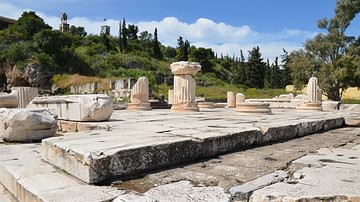
Image
Greater Propylaea of Eleusis
The Greater Propylaea at the Sanctuary of Eleusis (Greece) was a monumental gate probably built by Marcus Aurelius on the same site as an earlier gate from the time of Kimon, c. 170 CE - c. 180 CE.
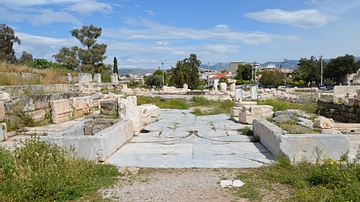
Image
Lesser Propylaea, Eleusis
The Lesser Propylaea at Eleusis (Greece) was a small gateway to the Sanctuary of Demeter and Kore built in the 1st century BCE.
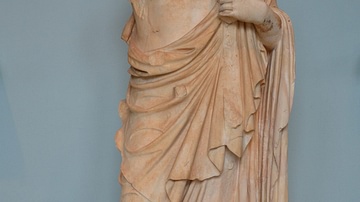
Image
Antinous as Asclepius from Eleusis
Statue of the deified Antinous represented as Asclepius, found in the outer court of the sanctuary of Demeter and Kore at Eleusis (Greece) which it apparently adorned, 2nd century CE. (Archaeological Museum of Eleusis)
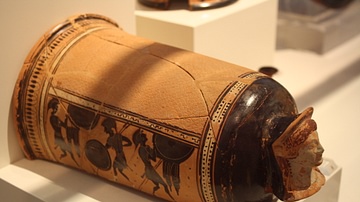
Image
Epinetron
Epinetron (pl. epinetra) - a half-cyclinder worn over the thigh with the closed end over the knee, used for preparing wool for weaving. The upper surface was often incised to make a rough surface against which the wool fibres could be rubbed...
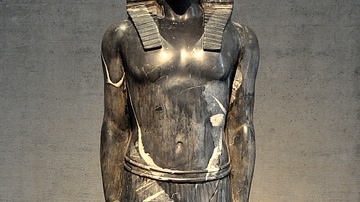
Image
Egyptianized Royal Statue from Hadrian's Villa
This marble statue depicts a standing-striding royal man with an Egyptianized style and was found at Hadrian's villa (Tivoli), Italy. Roman period, circa 135 CE.(State Museum of Egyptian Art, Munich, Germany).
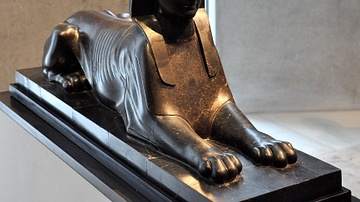
Image
Egyptian Sphinx from Hadrian's Villa
This basalt Egyptian-style sphinx was found at Hadrian's villa (Tivoli), Italy. Roman period, 1st century CE. (State Museum of Egyptian Art, Munich, Germany).
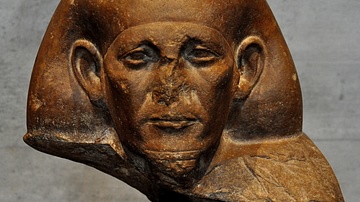
Image
Head of Mentuemhat
Quartzite head of the Theban official Mentuemhat. From modern-day Egypt. Saite period, 26th Dynasty, circa 650 BCE. (State Museum of Egyptian Art, Munich, Germany).
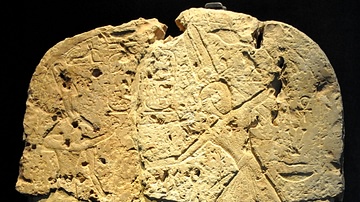
Image
Stela of Ramesses II
Limestone boundary stela of the Egyptian pharaoh Ramesses II. The king smites his enemies before the god Seth (also written Set). From Wadi Sannur, modern-day Egypt. New Kingdom, 19th Dynasty, c. 1250 BCE. (State Museum of Egyptian Art, Munich...
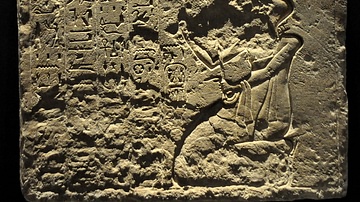
Image
Rahotep & Ramesses II
Limestone stela of Rahotep. It was dedicated to the Egyptian pharaoh Ramesses II. New Kingdom, 19th Dynasty, circa 1250 BCE. (State Museum of Egyptian Art, Munich, Germany).
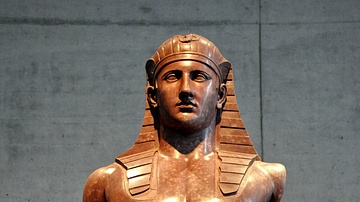
Image
Statue of Antinous
This marble statue depicts a standing-striding man with an Egyptianized style; he is Antinous, a favorite of emperor Hadrian. It was found at the Hadrian's villa (Tivoli), modern-day Italy. Roman period, circa 135 CE.(State Museum of Egyptian...